Best Cheap Audio Interface Picks for Professional Sound Quality 2024

Author's Pick
Focusrite Scarlett 2i2 4th Gen
Cons
- No RCA Output.
- No MIDI In/Out.
Pros
- "Clip safe" feature prevents clip distortion.
- The new "Auto" feature balances the levels automatically for you.
- Sleek, scarlet, brushed metal enclosure.
- Cables fit securely. No risk of accidental disconnections.
The Scarlett product line has undergone a lot of changes and has continuously evolved in every iteration. This cheap audio interface, by far, has the most parts upgraded, from their knobs, ADC converters, to the overall layout of the I/Os, as well additional buttons for ease of use. All these added changes and features weren't thrown into the mix for the sake of "newness." They were added to optimize the user experience.
One of their most significant upgrades, the Scarlett 2i2's ADC/DAC, now features Focusrite's proprietary RedNet converters. These converters are found in more expensive, high-end products of Focusrite, providing you with that pristine sound at an affordable price. It's capable of delivering up to 120dB of dynamic range in the line output with an ultra-low noise of -109 dB.
Most cheap audio interfaces have retained the XLR and 1/4-inch connectors. They removed the combo XLR connectors and separated the 1/4 inch and the XLR. The two balanced instrument level connectors are placed in front, and the 2 XLRs are now at the back, which I thought was a good move. This small change provides a much more organized cable management. It prevents further confusion in terms of switching on the INST button since the 1/4 inch, and the XLR connectors now have their opposite sides to occupy.
One notable addition is the auto and clip-safe buttons. The auto button serves as an automatic gain control for a hassle-free recording. Essentially, you toggle this switch, sing for 10 seconds or more, and it will set the levels at the most optimal level. For a cheap interface, this capability tilts the 2i2 on the positive side.
With the "clip safe" feature enabled, any input level that accidentally clips will never spike to audio distortion anymore. Every time clip safe is enabled, Scarlett continuously analyzes the signal at 96,000 per second. Combine that with analog preamp adjustments, the likelihood of clipping is reduced significantly.
The feel of turning the knobs feels smooth, spins infinitely, and doesn't stop at a max volume level. The gain knobs have gone from an analog to a digital operation. It makes sense due to the added features of auto and clip-safe modes that adjust the levels for you.
They've also expanded the "Air" capabilities of the 2i2. You have the classic analog "Air Presence" that gives that boosts the high end of your inputs. The newest one is the "Air Presence and Harmonic Drive," which takes the classic ISA preamp sound but with the added coloration on the high end. This feature, however, is available only at a 96kHz sample rate.
As for the downside, there have been a few reports of its Windows drivers not working as intended and the headphone volume level not being loud enough. RCA cables and MIDI ports aren't included for future expandability as well.
If your audio interface budget is limited, the Focusrite 2i2 4th gen offers a bite-sized version of the things you need for professional recording. Beginners and professionals alike will benefit a lot from its outboard-like features like Air, built-in automation, and clip protection, all of which can assist your workflow.
Tech Specs
- A/D Resolution: Up to 24-bit/192kHz
- Preamp:2
- Inputs: 2 x Mic, 2 x Inst inputs
- Outputs: 2 x 1/4" TRS balanced line outputs, 1 x 1/4" stereo headphone output
- MIDI:No
- Power: USB bus powered
- Phantom Power: +48V
- Bundled Software: Ableton Live Lite, Pro Tools Artist (3-month trial), and Hitmaker Expansion
The Best Audio Interfaces Under $100
Behringer U-PHORIA UMC202HD - Best Budget Audio Interface
Cons
- Uses USB type-B, an older standard than type-C
Pros
- Smooth and clean MIDAS preamps - especially great for vocals
- Solid metal enclosure and good feeling knobs
- 24-bit/192kHz resolution often reserved for higher priced interfaces
There's a new trend of adding console-level preamps on affordable audio interfaces. And Behringer quickly caught up thanks to their acquisition of MIDAS in 2009.
While it may not be as big of a household name as SSL or Neve, MIDAS has made recording consoles for decades—even Behringer's flagship Digital Mixers, like the X32, feature preamps designed by MIDAS.
MIDAS' expertise and tonality have been adapted to interfaces like the Behringer U-Phoria UMC202HD.
The tonality of the MIDAS preamps is similar to the color of API consoles and preamps. For the unfamiliar, the tonality feels smooth and clean in contrast to the sheen of Neve and the grit of SSL.
Paired with studio-grade 24-bit/192kHz resolution converters, the UMC202HD provides outstanding recording for the buck. The onboard MIDAS preamps amplify vocals with depth and dimension.
The build quality of this Behringer Audio Interface was a pleasant surprise, too. I didn't expect a good metal enclosure and solid-feeling knobs at this price point.
The USB jack is a weak point in an otherwise solidly built interface. Newer interfaces have begun adapting USB-C as a standard jack.
The Behringer UMC202HD audio interface is an excellent quality yet affordable pick. Especially if you consider that it uses tech developed by long-time console maker MIDAS. And it also helps that it is built well, which is a big bonus at this price point.
It is one of the good budget-friendly audio interfaces for podcasting. And thanks to its mobile-friendly profile, it is an excellent audio interface for Macbook Pro, iPads, and other laptops and mobile devices.
If your Home Studio Setup is budget is limited but you still want to maintain raw recording tonality without compromise, this affordable but powerful audio interface is for you.
Tech Specs
- A/D Resolution: up to 24-bit/192kHz
- Preamp: 2
- Channels: 2
- Inputs: 2 x XLR/TRS Combo
- Outputs: 2 x 1/4", 1 x 1/4" (Headphones)
- MIDI: None
- Power: USB bus powered
- Phantom Power: +48V
- Bundled Software: Tracktion DAW and 150 downloadable instrument/effect plug-ins
| Website | Source | *Rating Value |
| YouTube | Hardwired Review | 98/100 |
Arturia MiniFuse 1
Cons
- Disconnects when Mac goes into sleep mode.
- USB hub can get recognized as a storage at times.
- Registering and unlocking the device is required.
Pros
- Compelling premium software bundle and free 3-month subscriptions.
- Sleek, compact, and professional design.
- Loopback feature for streaming.
Cheap audio interfaces placed on desktops often stick out due to their design. With the Minifuse lineup, I find that the black-and-white option complements the look of any desktop. Yet, the build quality is solid and well-made.
The software lineup of Arturia is paid, and you get the opportunity to install it for free if you have the unit. Notably, the Delay Tape 201 pays homage to the classic Echoplex and the echo chamber delay units. Vocals and guitars evoke an authentic, analog tone.
The Minifuse is also bundled with a 3-month Splice subscription that’s sought-after by music producers who dabble with one-shot samples and loops. Couple that with the free Ableton Lite, beat making becomes a much easier process.
At the back of the unit, you have standard connections such as L/R outputs and a USB-C connector. They’ve added an extra USB hub as a pass-through extension for connecting audio or non-audio-related peripherals. This hub doesn’t contribute to the noise floor. I thought it was a nice touch, provided that not a lot of manufacturers include this supplementary connector in cheap audio interfaces.
The Minifuse has loopback capabilities for podcasters, gamers, and live music streamers. It enables you to play back the sound of your computer with no additional non-Arturia software installs. This is probably the cheapest audio interface I could find that has a loopback built-in.
There’s one minor problem with the USB hub, however. The Minifuse has a very small storage for data and it sometimes gets detected as a flash storage. You might have to disconnect/reconnect. Overall, it doesn’t affect one’s workflow in any way. It also gets disconnected when your computer goes into sleep mode.
The Arturia Minifuse 1 is the best budget audio interface for those seeking good-quality audio with a unique aesthetic. Regardless if you’re a bedroom producer, a streamer, or a podcaster, this interface is a trifecta of simplicity, functionality, and design.
Tech Specs
- A/D Resolution: Up to 24-bit/192kHz
- Preamp: 1
- Channels: 1 x XLR-1/4" combo (mic/line)
- Inputs: 1 x combo Mic/Inst/Line XLR inputs
- Outputs: 2 x 1/4" TRS balanced line outputs, 1 x 1/4" stereo headphone output
- MIDI: No
- Power: USB bus powered
- Phantom Power: +48V
- Bundled Software: Ableton Live Lite, NI Guitar Rig 6 LE, Analog Lab Intro, Pre 1973, and Rev PLATE-140 plugins
The Best Audio Interfaces Under $200
Arturia MiniFuse 2
Cons
- Accidental disconnection when mac is sleeping
- USB hub can get misread as a USB storage
- USB hub doesn't have enough power
Pros
- Amazing build quality and ultra-low noise
- Solid software bundle for both beginners and professionals
- 3-month complimentary subscriptions and free software bundles
- Loopback allows you to record computer sounds.
The Minifuse 2 has all of the notable qualities of the Minifuse 1. Both have wrap-around metal enclosures with durable front and back plastic panels and knobs that indicate green for healthy gain levels and red for clipping. Sound quality is the same on both units as well. The only difference is the two inputs that allow you to record 2 tracks simultaneously, as well as a direct monitoring knob that the Minifuse 1 does not have. This provides you with more control over the balance between the software and direct monitoring.
There is a direct mono button under the monitor mix knob. By toggling it, you can turn a stereo output into mono. Thus, if you've been using a mono plugin in your master fader, this is an easier way to just flip through both mixes without breaking your momentum.
Near the big knob, there's a standard meter that shows you the output level of your signal. However, there seems to be no option to use the meter to track input levels as of the moment for both Minifuse 1 and 2. It would be helpful for those people who want to track their levels on a scale.
The additional USB hub of the Minifuse 2 also enables you to hook up any device just like a normal USB port. With this cheap interface, you would think USB hubs in the back panel wouldn't be as useful until you run out of ports.
Aside from their physical features, what differentiates the Minifuse line from other products is the software bundles and subscriptions that come with it. You have a free 3-month subscription for Splice and Antares as well as the flagship Arturia plugins that come with their hardware. Ableton Lite is also a part of the software bundle. For those who already have a Splice and Antares account, it will only work for new customers. You can create a new account solely for this.
For those people who stream a lot, podcasts, gaming, or live music, it gives you the option to loop back your audio. This means you can record your voice and sounds on the computer at the same time.
Now for the cons. When your computer goes to sleep, the Minifuse 2 gets disconnected, and you have to reconnect it manually. Thus, for long recording sessions, you might have to turn off sleep mode to avoid interruptions. The USB hub is also underpowered, and connecting MIDI keyboards can be a hit or miss.
The Minifuse 2 is a cheap audio interface with good hardware. It provides a software bundle like synths and effects that beginners can use to get that professional sound right off the bat. Musicians who want to record 2 tracks at the same time will benefit from this budget audio interface. It's also a good entry-level interface for podcasters and game streamers as well.
Tech Specs
- A/D Resolution: Up to 24-bit/192kHz
- Preamp: 2
- Channels: 2 x XLR-1/4" combo (mic/line)
- Inputs: 2 x combo Mic/Inst/Line XLR inputs
- Outputs: 2 x 1/4" TRS balanced line outputs, 1 x 1/4" stereo headphone output
- MIDI: Yes
- Power: USB bus powered
- Phantom Power: +48V
- Bundled Software: Ableton Live Lite, NI Guitar Rig 6 LE, Analog Lab Intro, Pre 1973, and Rev PLATE-140 plugins
Solid State Logic SSL 2
Cons
- Springy buttons
- Would be nice if it had mute buttons
Pros
- Zero latency direct monitoring
- Neat connection layout (all at the back)
- Nice preamp sound, with 4K legacy preamp option
- Plenty of headroom and gain for low output dynamic mics
Among the best cheap audio interfaces, Solid State Logic is known for high-quality audio recording components, including consoles and outboard gear. They have since leaped into the entry-level audio interface market and have been having much success with the SSL 2.
Instead of the compact rack profile typical among interfaces, the SSL 2 takes a more modern approach with a tabletop-friendly profile. All the controls and metering are on its inclined top, making it look more like a miniature mixer. This makes the SSL 2 a straightforward audio interface, easy to integrate into modern computer-centric music production and content creation setups.
It also helps that the unit looks good and integrates cleanly, with all the cables plugged into the back. However, this can be an issue if you constantly have to unplug cables for different headphones and instruments.
But it's not just about style because the SSL 2 audio interface ticks every box for functionality and quality. It meets modern-day sample rate and audio quality standards. The controls and metering are very intuitive, much like a mixer.
The 4K Legacy mode also shapes your sound like the SSL 4000 series analog console. It boosts the highs in a musical way, which helps push vocals or instruments up front in a mix. It also adds a warm harmonic distortion that injects old-school personality into your recordings.
The buttons are a bit springy, but they get the job done. And it would've been nice if it had mute buttons.
The Solid State Logic SSL 2 is an exemplary, budget audio interface for desktop setups. It can cater to the needs of musicians and has enough functionality for basic streaming and podcasting needs.
Tech Specs
- A/D Resolution: 24-bit/192kHz
- Preamp: 2
- Channels: 2
- Inputs: 2 x XLR Combo (Mic/Line/Hi-Z)
- Outputs: 2 x 1/4" TRS (L/R)
- MIDI: None
- Power: USB bus powered
- Phantom Power: +48V
- Bundled Software: SSL Production Pack, 3rd Party Bundled Software
| Website | Source | *Rating Value |
| Mixdown Mag | Sam McNiece | 98/100 |
Universal Audio Volt 2
Cons
- Access to the interface control software requires account and login
- Vintage mode may be too strident with bright mics
Pros
- Vintage preamp mode adds life to darker sounding voices, mics and instruments
- Excellent build quality at this price point
- Versatile monitoring options
- Top tier software suite included
Universal Audio isn't one to miss out on the cheap audio interface hype. The Volt series is their way of kicking the notch up in quality for interfaces at this price point.
It features a preamp section based on their 610 tube preamp/consoles, famous for records like "Harvest" by Neil Young, "LA Woman" by The Doors, and quite a few mention "Van Halen 1" by Van Halen was recorded on one. With this catalog of hits, it's impossible not to have high expectations about Universal Audio's implementation of the preamp's sound into a compact audio interface.
The chassis combines a powder-coated black lower half and a textured, matte silver upper bout. This combo adds to the premium feel of the unit. The knobs felt smooth and had just the right resistance for finer adjustments for this cheap interface. The buttons for phantom power, monitoring, and engaging the vintage mode of the preamps are clear buttons with a raised plastic surround. The buttons themselves illuminate when activated and have a very high-quality, tactile feel that inspires confidence in the long-term durability of the unit.
The XLR combo plugs are made by Amphenol and are also of high quality. The knobs are accompanied by 2 LED lights each to indicate signal and clipping. While the monitor host/direct switch has an indicator for which routing is activated.
The two monitor out jacks are secured at the back with a nut and washer. Compared to Focusrite, for example, where the jacks are made of plastic and soldered into the internals, this feels more solid, and again, it inspires confidence in the long-term durability of the interface. The Midi I/O jacks are standard fare. I want to note the use of a big power switch on the back for such a small interface. All these high-quality parts come together to a whole that I reiterate to be a solidly built interface.
The interface sounded neutral without the vintage mode, comparable to the XMAX Preamps on my Presonus ioStation 24c with slightly extended high frequencies. It's subtle, but I can hear it while recording. However, with the vintage mode on, additional harmonics are added at the upper, mid, and high frequencies. It's not an EQ, by the way. Additional harmonics are a byproduct of circuit design and add more density/smoothness than boosting it with EQ. So engaging upper frequency harmonics is a great option, especially for warmer-sounding microphones like the Rode NT1.
The Vintage Mode paired with a bright mic like the Lewitt LCT 440 Pure could be too strident on the high frequencies, but this is an error of redundancy. It's a good thing that Universal Audio made the vintage mode a toggle because the Lewitt sounded better with it off. Having only the vintage mode on by default would have been a deal breaker.
The Universal Audio Volt 2 is an excellent entry into a market that's already crowded. While this cheap interface does so without adding too much novelty, the build quality, bundled software, and the preamp design make it a great value. The preamp's richness adds a tonal nuance to those who know what to look for. Get it if you want to get that 610 preamp magic into your mixes without breaking the bank.
Note that this section is taken from parts of my full-review of the Universal Audio Volt 2 audio interface.
Tech Specs
- A/D Resolution: 24-bit/96kHz
- Connectors: 1 x USB-C to USB-A cable, 1 x USB Power cable
- Channels:2
- Inputs: 2 x XLR-1/4" combo (mic/instrument), MIDI IN
- Outputs: 2 x 1/4" (L/R), 1 x 1/4" (Headphones), MIDI OUT
- MIDI: In/Out
- Power: Bus Powered (dedicated power cable included)
- Phantom Power: Yes (+48v)
- Bundled Software:Ableton Live 11 Lite, Melodyne Essential, Brainworx Ampeg® SVT-VR Classic Bass Amp, Softube Marshall Plexi Classic Amplifier, LX480 Essentials, Virtual Drummer DEEP, Virtual Bassist DANDY, Spitfire Audio LABS
| Website | Source | *Rating Value |
| Gearank | Raphael Pulgar | 92/100 |
Focusrite Scarlett 2i2 3rd Gen - Best 2 Channel Audio Interface for enthusiasts
Cons
- No MIDI capabilities
Pros
- Excellent and proven preamps with a lot of gain
- Sleek, refined and durable build quality
- "Air" ISA preamp emulation feature a welcome addition
The Scarlett series has long been a darling with the project studio community for its excellent sound quality, solid build, and incredible plugin bundles. However, the stock for this budget audio interface is quickly getting phased out as the 4th gen arrived.
The 3rd Gen release of the line makes minor tweaks that improve the overall capabilities of each model, especially the way they handle high-gain inputs from mics and instruments.
The 2i2 is no exception to these improvements as the unit now includes Focusrite's proprietary "Air" technology from their more expensive ISA series preamps. This improves the basic audio quality of this cheap interface.
The Scarlett 2i2 makes for an excellent first "serious" interface, being the best at this price point for many use cases.
With no compromises made regarding the preamp and signal converters, the 3rd Gen 2i2 is built for small home studios and mobile setups. This budget audio interface is also a good audio interface for podcasts and live streaming. I didn't have access to a USB mixer, but the 2i2 served as a suitable option for my live streaming interface. This setup served me well for a year, and I found no problems. I especially love the visual feedback the ring lights provide.
The headphone output is also an upgrade from the Scarlett Solo. Adjusting the headphone output separately is a major factor in getting this over the Solo.
Not having MIDI is a bit of a letdown but you can always get a separate MIDI interface if you need one later. If you're doing basic recording and streaming, the 2i2's analog inputs are more than enough.
This is THE cheap interface to get if you want pristine recordings for voice, instruments, and more. With the tweaked gain response of the preamp, even the highest output metal pickups get the same red carpet treatment to your hard drive as the nicest vintage T-style guitar.
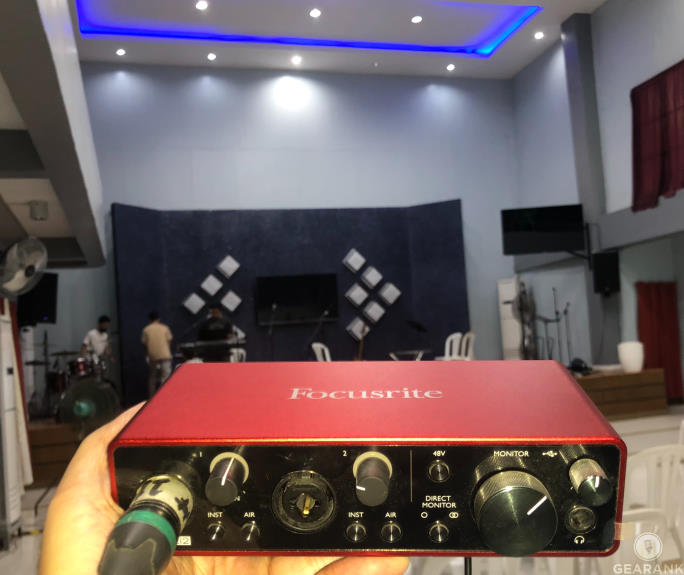
It is also a handy interface for live recordings.
Tech Specs
- A/D Resolution: Up to 24-bit/192kHz
- Preamp: 2
- Channels: 2
- Inputs: 2 x XLR-1/4" combo (mic/line/Hi-Z)
- Outputs: 2 x 1/4" TRS
- MIDI: No
- Power: USB bus powered
- Phantom Power: +48V
- Bundled Software: Ableton Live Lite, Pro Tools First Creative Pack, Red Plug-in Suite, Focusrite Collective access
| Website | Source | *Rating Value |
| PC Mag | Tim Gideon | 80/100 |
| Guitar World | Chris Gill | 90/100 |
| YouTube | Podcastage | 90/100 |
Things to Consider when Buying a Cheap Audio Interface
- Compact audio interfaces are one of the most common music equipment found in home studios. 2 channel audio interfaces and even single-channel ones are good enough for most home recordings because you can record vocals and instruments one by one and mix them later. But if you plan on recording over two sound sources simultaneously, consider those with 4 channels or more.
- Most audio interfaces use "combo" inputs, which accept XLR and 1/4" jacks. Since they are essentially 2-in-1 ports, they allow for smaller form factors and help reduce the cost of the product. They also simplify connections for users and allow for worry-free connection of mics and instruments. Some still use traditional separate XLR and 1/4" ports, especially older devices. We have listed the types and number of inputs available for each audio interface in this list for your perusal. Connect a mixer to your USB audio interface if you need to expand your input options.
- What is an audio interface is a question that is often neglected by beginners. You should know about its main function, which involves handling instrument and line-level inputs. A good audio interface can handle Line Level (low impedance) and instrument level (high impedance) sources. Line-level sources include keyboards and other electronic instruments, while instrument-level ports are for guitars and basses with no active preamp. While you can use a DI box if your interface doesn't support the instrument level, it is more convenient to plug straight into your interface. So, if you plan to record multiple instruments and mics, you'll want one that allows for switching the input between mic, instrument, and line levels.
Do note that if you use outboard gear like external preamps, compressors, EQs, etc., you will need to use the line-level input of an interface. This prevents any gain staging issues and keeps the signal clean.
In addition to having a good mic and instrument input options, you should also look for ones with multiple analog outputs.
-
- Mic Preamp Quality
When using Mics, the preamps can play a significant part in the resulting character of the sound. The best audio interfaces have preamps that go for either transparency or character. For versatile home recording use, you'll find transparent ones. These aim to reproduce the sound coming in as accurately as possible. Thankfully, this is what the audio interfaces in this list provide, but others prefer preamps that can subtly color the sound.Different audio interfaces from different manufacturers will sound different. They will be subtle and are more evident with more expensive microphones.
- Phantom Power
If you haven't yet, you will end up using a condenser mic at some point when recording. These mics typically require between 11V and 48V phantom power to operate, so checking if the audio interface you're buying can provide the required phantom power is imperative.
- Mic Preamp Quality
- These two parameters determine how much of the analog audio signal is preserved when converting it to digital. The higher the number, the finer the details captured. The frequency range is determined by halving the sample rate (i.e., 48kHz sample rates can capture up to 24kHz in the high frequencies). Bit depth determines how much dynamics in the amplitude of your signal are preserved in the analog-to-digital conversion. While the converters determine the audio's resolution, the recordings' quality and tonality are more affected by other parts of the signal chain coming before it, such as the preamps, cables, and microphones. As a general guideline, the higher the Sample Rate and Bit Depth a device is capable of, the higher its potential to capture better-resolution audio. This is important, especially with storage sizes now growing to accommodate the larger file sizes higher resolution brings.
- It's best to get an audio interface that can work with the widest possible range of operating systems. It also has to be USB Audio Class Compliant to be 'future proof.' Plug-and-Play functionality allows for quick and convenient recordings, whatever the device you're working with.
With this, you won't need to depend on the manufacturer's drivers for it to operate with the broadest range of current and future operating systems.
IOS, Android, and Linux users must look out for this because sometimes drivers can't be used or aren't provided/updated. But even Windows and Mac users can be stranded when a new OS version comes out, and the manufacturer does not make new drivers available.
Proprietary drivers can provide access to extra features. But it's handy to know your interface can keep working long after the drivers have stopped being updated.
If you have an older iPad and you want to use it for mobile recording, then consider interfaces that can directly connect with them. You'll need to purchase Apple's camera connection kit (CCK) or Lightning to USB Adapter for USB interfaces. They let you convert regular USB jacks into iPad-compatible ports. Current Apple products are using USB-C so you don't have worry about using an adaptor if you own a new iPhone or iPad.
Under this setup, you must also be aware of providing power to the interface. The easiest way to find one suitable for the iPad is to read our guide to The Best iPad Audio Interfaces. You'll see a Universal audio interface, which beat out an older M Audio interface.
- The ability to be powered via USB is a convenient option that many modern-day audio interfaces utilize. While those that use "wall warts" or power adapters are still viable, getting power from the USB is a welcome plus because it can help reduce clutter and allow for mobile use when there is no power outlet to plug into. Some audio interfaces have the option to be powered by regular batteries for even more portability.
- In addition to knowing how to record music, you will need a good DAW (Digital Audio Workstation) or recording software for recording to use audio interfaces. Thankfully, cheap audio interfaces are bundled with various useful DAWs, albeit with some limitations. Still, many of these free applications have enough features to handle the recording and mixing needs of conventional music. Note that to get the full functionality of some DAWs, you'll have to pay extra. You may also need other outboard gear with digital inputs and audio equipment.
How many channels do I need?
Input Ports
Instrument Level and Line Level Inputs
Mic Preamps and Phantom Power
A/D Converter Sample Rate and Bit Depth
Computer and iPad Compatibility
Power Options
Bundled Software and Drivers
Cheap Audio Interface Selection Methodology
The first Edition was published in 2015. The current edition was published on February 13, 2024.
We first looked at all the best audio interfaces with at least 1 microphone input under $200, which includes single-channel, dual-channel, and four-channel audio interfaces. We ended up with 53 candidate audio interfaces. We then analyzed relevant reviews and ratings, including the most current ones up to February 2024. For this edition, the number of review sources that we processed reached over 150,000. The Gearank Algorithm processed this staggering amount of data and gave us the rating scores out of 100 we used to narrow the list to just the best among the best. Finally, we divided our recommendations into two price ranges to make it easier to spot those that fit your budget. For more information about our methods, see How Gearank Works.
About the Author and Contributors
Here are the key people and sources involved in this guide's production - click on linked names for information about their music industry backgrounds.
Lead Author & Researcher
Raphael Pulgar
I've been an audio engineer for 20 years specializing in rock and metal recordings. I also play guitar and produce original music for my band and other content creators.
Some of the recording gear I use in my studio includes the Focusrite Scarlett 18i20, Focusrite Scarlett Solo, Samson QH4 Headphone Amp and Cloudlifter CL-1. My mics include Aston Origin, Aston Element, Shure SM57, Rode NT1, Rode PodMic and MXL V67G.
Contributors
Allen Articulo & Alden Acosta: Research.
Jason Horton: Editing and Illustrating.
Alexander Briones: Supplemental writing & Editing.
Media
Main/Top Image: Copyright © Gearank - photograph of the Focusrite Scarlett Solo 3rd Gen.
The individual product images were sourced from websites, promotional materials or supporting documentation provided by their respective manufacturers except for the additional Focusrite Scarlett Solo photograph which was taken by the author and the additional Focusrite Scarlett 2i2 photo taken by Alexander Briones.




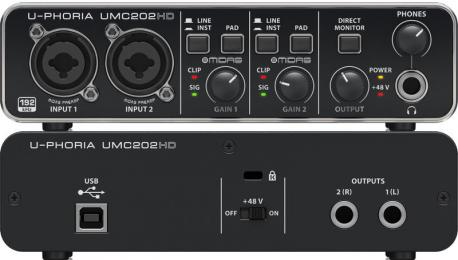

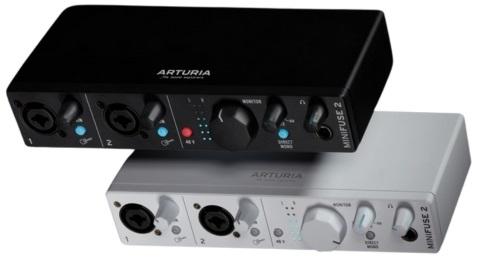
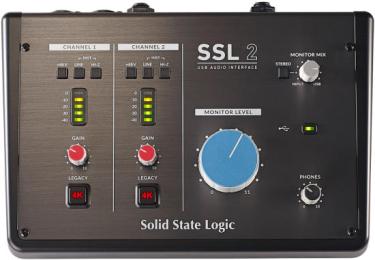

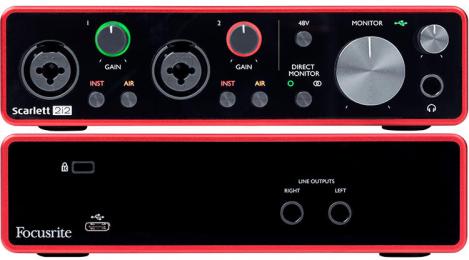
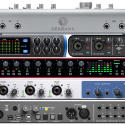

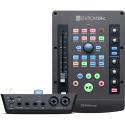

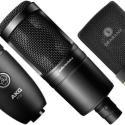
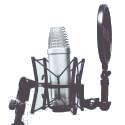

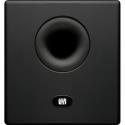
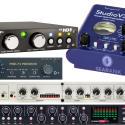
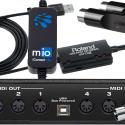
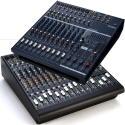
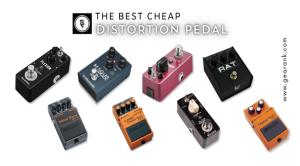
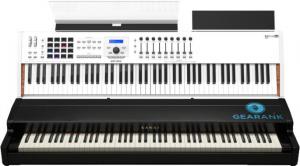

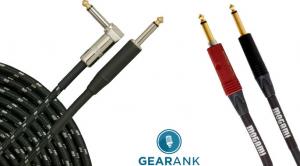
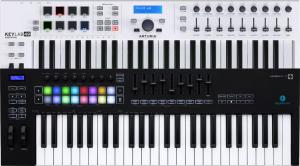
Comments
The Audient ID4 MKII and
Submitted by Alexander Briones on
The Audient ID4 MKII and Shure X2U came off our recommended list when we published the October 2023 Edition of this guide.
The Behringer U-Phoria UMC22
Submitted by Jason Horton on
The Behringer U-Phoria UMC22 came off our recommended list when we published the April 2022 Edition of this guide.
Publication of our September
Submitted by Jason Horton on
Publication of our September 2021 Edition resulted in the following interface coming off the recommended list above: Behringer U-Control UCA222.
hi, looking to digitise my
Submitted by pigneguy (not verified) on
hi, looking to digitise my vinyl.
Would you recommend the Motu over Focusrite for this ? I have a Macboook 2020 with 4 thunderbolts.
Hello,
Submitted by Raphael Pulgar on
Hello,
Either would work but check what outputs your vinyl player has. If it only has RCA outs, even a behringer UCA222 would do. But if your player has balanced XLR outs, I'd personally go for the Focusrite. MOTU is great too as the noise floor is better on it so if that's important to you (especially if you have an older vinyl player).
-Raphael
damn all the cons in this
Submitted by matt (not verified) on
Damn all the cons in this review were explained very well. Good show.
Hi, Matt!
Submitted by Raphael Pulgar on
Hi, Matt!
Thanks for the feedback! I'm glad I was able to help achieve some clarity.
-Raphael
We have removed the following
Submitted by Jason Horton on
We have removed the following interface due to it being discontinued and superseded: Audient ID4.
The October 2020 update
Submitted by Jason Horton on
The October 2020 update resulted in the following interfaces leaving our recommended list above, but you can still see our analysis of them:
I have an old Line6 Toneport
Submitted by bob (not verified) on
I have an old Line6 Toneport UX2. I was wondering how these compare to the units you just reviewed?
Hi Bob,
Submitted by Raphael Pulgar on
Hi Bob,
The Toneport UX2 (and its identical successor, the Studio UX2) was popular in the early 2010s because of it's relatively low price and bundled software (Pod Farm). Mostly metal players picked it up because several popular bands at the time attributed their tone to either the "Big Bottom" model (for a number of British bands) and the "Cali Diamond Plate" model (for mostly American bands).
In our database, the Studio UX2 gets a score of 81 out of 100 as of April 2020; which is par for the course. Though the unit gets good reviews for its easy of access and bundled software, it gets low reviews for its build quality and longevity. Many UX2 users report long term part failure.
For sound quality as a general purpose audio interface, the UX2's preamps just aren't up to par with modern audio interfaces that have higher quality components and circuitry at accessible prices.
My advice: Try it out, and if it still works, I think the Pod Farm software is still available for downloads for legacy users. The Cali Diamond Plate doesn't sound like the Mesa Dual Rectifier it seeks to emulate but it fits well with most mixes.
-Raphael
We've had to remove the
Submitted by Jason Horton on
We've had to remove the Steinberg UR12 from the Under $100 recommended list above due to a price increase.
Focusrite Scarlett - "Some
Submitted by Niki (not verified) on
Focusrite Scarlett - "Some users report crackling and sound loss but comments on these posts point to their computers not being up to spec to handle low buffer size. A tweak in the latency/buffer size settings on the driver fixes most of these issues."
If only it were so simple. I use an 18i20 plus Octopre for 16-track recording. Results are excellent, but I simply cannot use Focusrite for playback at home. I have a powerful desktop rig which should in theory handle the task without breaking a sweat, but despite trying every suggestion I've been able to find, plus contact with customer support, I've given up.
I record on my Focusrites and use a Zoom R8 for playback.
The Scarletts are a nice series but I would not in good conscience recommend them to anybody who wants hassle-free ASIO audio.
The following audio
Submitted by Jason Horton on
The following audio interfaces came off our recommended list above due to our December 2019 update, but you can still see our analysis of them:
We have removed the following
Submitted by Jason Horton on
We have removed the following interface from the recommended list above due to a price increase, but you can still read our analysis of it: Steinberg UR242
Where does Tascam's offerings
Submitted by Sludge (not verified) on
Where do Tascam's offerings sit compared to these?
We have published ratings for
Submitted by Jason Horton on
We have published ratings for 3 Tascam audio interfaces that are priced at or under $200 and which meet the eligibility criteria for this guide - this will take you to a list of them in the music gear database where you can see their current ratings.
As a result of the June 2018
Submitted by Jason Horton on
As a result of the June 2018 update, the following audio interfaces were removed from the recommended list above but you can still read what we have to say about them:
Save your money and get the
Submitted by MorningMan (not verified) on
Save your money and get the cheaper version two inputs AI.You can only record a vocal and a guitar one at the time. You only need 4 or more if you intent to have the whole live band come to your basement and they all plug their instruments into your Au.interface, and then your computer blows up in two minutes.